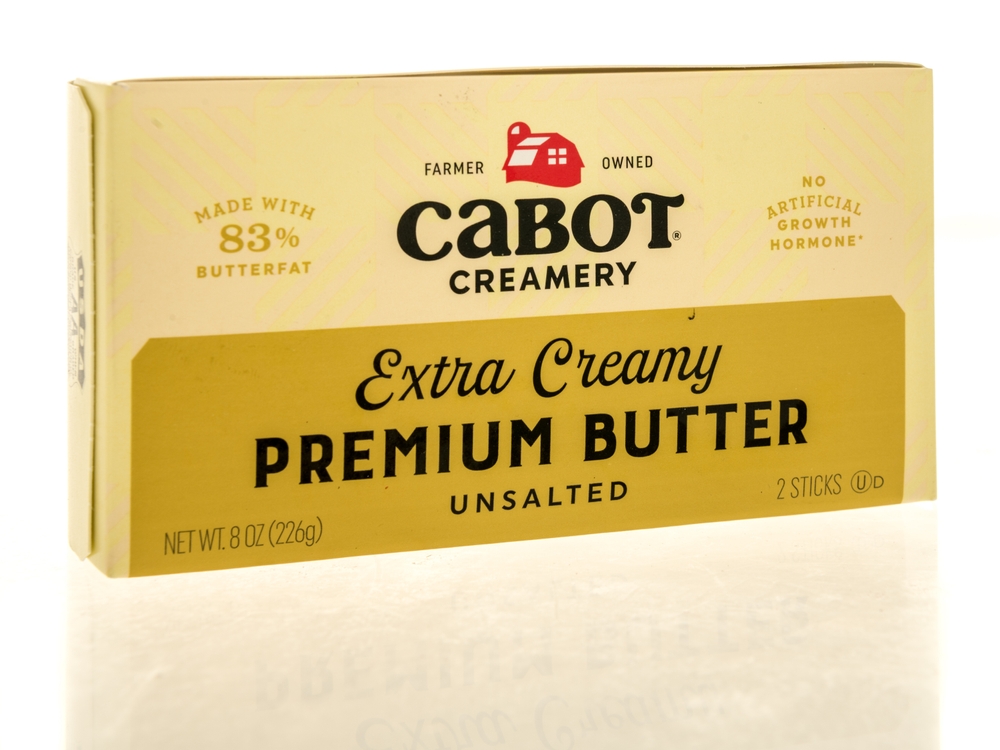Nearly 65,000 pounds of butter have been pulled from distribution nationwide after officials found a serious labeling error involving a major food allergen. Bunge North America, based in Chesterfield, Missouri, issued a voluntary recall on July 14 for 1,800 cases of NH European Style Butter Blend because milk was not listed on the product label. The company is a major agribusiness that produces food ingredients for restaurants, bakeries, and food manufacturers.
The U.S. Food and Drug Administration first classified this as a Class III recall, meaning low risk of health problems. On July 30, regulators upgraded the classification to Class II, meaning the product may cause temporary or reversible health problems.
How to Spot the Recalled Butter in Your Kitchen
The recalled butter is NH European Style Butter Blend, sold in white paperboard cases with 36 individual blocks. Consumers should look for these identifying numbers: product code 5023937, UPC (barcode) 10078684 73961 2, and lot code 5064036503.
Don’t Eat It, Even If No One Has Milk Allergies
The FDA urges consumers to check their butter products for the identification codes listed above. The problem here is that milk appears in the product but not on the packaging, which breaks food safety rules.
If the codes match, do not eat the butter at all, even if no one in your household has milk allergies. You can either dispose of the product safely or return it to the store for a full refund. Most retailers will accept returns even without a receipt.
Do not give the recalled item to others or donate it to food banks. This puts more people at risk of allergic reactions, especially those with milk allergies who won’t know the ingredient is present.
If you ate the butter and feel allergy symptoms, see a doctor right away. Doctors can evaluate how serious the reaction isand decide if you need emergency treatment. If you have severe milk allergies, keep your emergency medication ready, such as an EpiPen if prescribed.
Why Officials Issued This Recall
Milk is a common food allergen in children. If someone with a milk allergy eats this unlabeled product, the immune system can react within minutes.
Leaving milk off the label violates federal law. The Food Allergen Labeling and Consumer Protection Act of 2004 requires clear labeling for eight major allergens, including milk. The Food Allergy Safety, Treatment, Education, and Research Act of 2021 added sesame as the ninth. People with allergies rely on these labels to stay safe, and manufacturers are required to follow the rules.
Symptoms may start with hives, swelling of the face or lips, nausea, or vomiting. Severe reactions can bring wheezing, throat tightness, trouble breathing, or dizziness. Anaphylaxis is life-threatening and can send the body into shock.
This product carries added risk because many cooks use it without checking labels each time. Families could unknowingly serve milk to someone with allergies. Even careful readers had no way to know it contained milk.
Check for This Butter Nationwide
The recalled butter reached consumers nationwide through 12 distribution centers in the United States and one in the Dominican Republic. People bought this product in stores, on Amazon, or ate it at restaurants that purchase from Food Service Direct.
This wide distribution means the butter could be anywhere across multiple states. Check your butter even if you don’t live near Missouri, where Bunge is based.
The FDA noted there was no initial press release for this recall, which made the safety warning harder to find. Many consumers had to rely on federal monitoring databases to learn about the problem, making it easy to miss the recall notice entirely.
A Similar Butter Recall Last Year

Butter recalls have become increasingly common. In March, Agri-Mark Inc. recalled more than 1,700 pounds of Cabot Creamery butter because of possible coliform bacteria contamination. The Vermont company’s recall was classified as Class III, the lowest risk level, and covered products distributed in seven states. Coliform bacteria are common in the environment and in fecal matter. They usually do not cause illness, but their presence can signal germs that do. Luckily, no illnesses were reported.
The Same Problem Keeps Happening
These labeling errors keep happening because quality controls at some plants fail to catch them. This butter recall shows how a missing allergen on a label can move through production, shipping, and sale without being flagged. FDA warning letters to food companies describe ongoing lapses in allergen handling and label review, including cases where undeclared peanuts or eggs were linked to deaths. An FDA survey of dark chocolate found milk in 6.2 percent of products sold as dairy-free, evidence that hidden allergens still reach store shelves.
If you have questions about this recall, contact Bunge North America through the form on its website. The company has not said how the error occurred or what changes it will make to prevent a repeat.
